
Albrecht Altdorfer was a German painter, engraver and architect of the Renaissance working in Regensburg, Bavaria. Along with Lucas Cranach the Elder and Wolf Huber he is regarded to be the main representative of the Danube School, setting biblical and historical subjects against landscape backgrounds of expressive colours. He is remarkable as one of the first artists to take an interest in landscape as an independent subject. As an artist also making small intricate engravings he is seen to belong to the Nuremberg Little Masters.
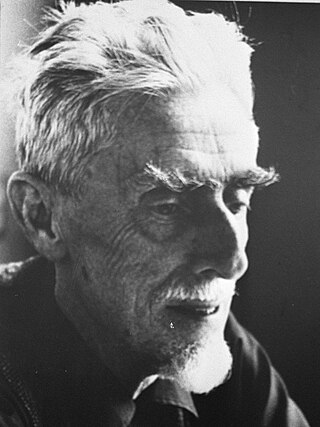
Maurits Cornelis Escher was a Dutch graphic artist who made woodcuts, lithographs, and mezzotints, many of which were inspired by mathematics. Despite wide popular interest, for most of his life Escher was neglected in the art world, even in his native Netherlands. He was 70 before a retrospective exhibition was held. In the late twentieth century, he became more widely appreciated, and in the twenty-first century he has been celebrated in exhibitions around the world.
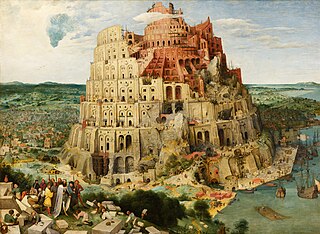
The Tower of Babel is an origin myth and parable in the Book of Genesis meant to explain why the world's peoples speak different languages.

The Penrose triangle, also known as the Penrose tribar, the impossible tribar, or the impossible triangle, is a triangular impossible object, an optical illusion consisting of an object which can be depicted in a perspective drawing, but cannot exist as a solid object. It was first created by the Swedish artist Oscar Reutersvärd in 1934. Independently from Reutersvärd, the triangle was devised and popularized in the 1950s by psychiatrist Lionel Penrose and his son, prominent Nobel Prize-winning mathematician Sir Roger Penrose, who described it as "impossibility in its purest form". It is featured prominently in the works of artist M. C. Escher, whose earlier depictions of impossible objects partly inspired it.

Dolphins also known as a Dolphins in Phosphorescent Sea is a woodcut print by the Dutch artist M. C. Escher. This work was first printed in February, 1923. Escher had been fascinated by the glowing outlines of ocean waves breaking at night and this image depicts the outlines made by a school of dolphins swimming and breaching ahead of the bow of a ship. The glow was created by bioluminescent dinoflagellates.

Castrovalva is a lithograph print by the Dutch artist M. C. Escher, first printed in February 1930. Like many of Escher's early works, it depicts a place that he visited on a tour of Italy.

Regular Division of the Plane is a series of drawings by the Dutch artist M. C. Escher which began in 1936. These images are based on the principle of tessellation, irregular shapes or combinations of shapes that interlock completely to cover a surface or plane.

Still Life and Street is an unusual woodcut print by the Dutch artist M. C. Escher which was first printed in March, 1937. It was his first print of an impossible reality. In this artwork there are two distinctly recognizable realities bound together in a natural yet impossible way. Looked at from the window, the houses make book-rests between which tiny dolls are set up. Looked at from the street, the books stand yards high and a gigantic tobacco jar stands at the crossroads.
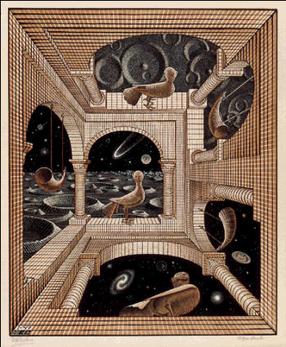
Another World II, also known as Other World II, is a woodcut print by the Dutch artist M. C. Escher first printed in January 1947.

Puddle is a woodcut print by the Dutch artist M. C. Escher, first printed in February 1952.
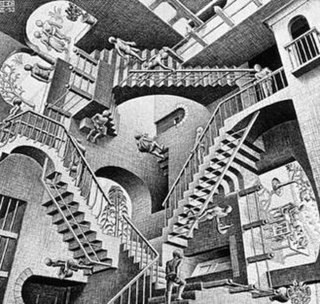
Relativity is a lithograph print by the Dutch artist M. C. Escher, first printed in December 1953. The first version of this work was a woodcut made earlier that same year.
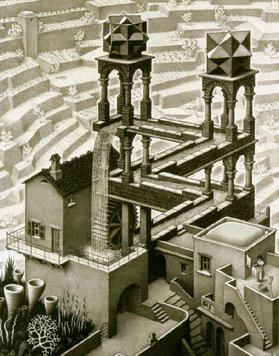
Waterfall is a lithograph by the Dutch artist M. C. Escher, first printed in October 1961. It shows a perpetual motion machine where water from the base of a waterfall appears to run downhill along the water path before reaching the top of the waterfall.
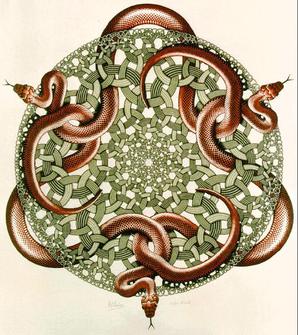
Snakes is a woodcut print by the Dutch artist M. C. Escher. The work was first printed in July 1969, and was Escher's last print before his death.

Stars is a wood engraving print created by the Dutch artist M. C. Escher in 1948, depicting two chameleons in a polyhedral cage floating through space.

The Tower of Babel was the subject of three paintings by Pieter Bruegel the Elder. The first, a miniature painted on ivory, was painted while Bruegel was in Rome and is now lost. The two surviving paintings, often distinguished by the prefix "Great" and "Little", are in the Kunsthistorisches Museum, Vienna and the Museum Boijmans Van Beuningen in Rotterdam respectively. Both are oil paintings on wood panels.

Mathematics and art are related in a variety of ways. Mathematics has itself been described as an art motivated by beauty. Mathematics can be discerned in arts such as music, dance, painting, architecture, sculpture, and textiles. This article focuses, however, on mathematics in the visual arts.

Abel Grimmer was a Flemish late Renaissance painter, mainly of landscapes and, to a lesser extent, of architectural paintings. His works were important in the development towards more naturalism in Flemish landscape painting.

Hendrick van Cleve or Hendrik van Cleve III was a Flemish painter, draughtsman and designer of prints. He is known for topographical views, including views of Rome and the Vatican, as well as imaginary landscapes. Traditionally, a large number of depictions of the construction of the Tower of Babel have been attributed to him but most of these are now attributed to anonymous Flemish painters, who are referred to as 'The Hendrik van Cleve III Group'.
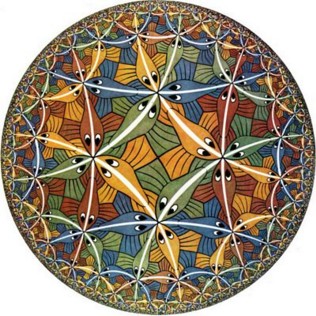
Circle Limit III is a woodcut made in 1959 by Dutch artist M. C. Escher, in which "strings of fish shoot up like rockets from infinitely far away" and then "fall back again whence they came".

Day and Night is a woodcut made by the Dutch artist M. C. Escher in 1938.



















